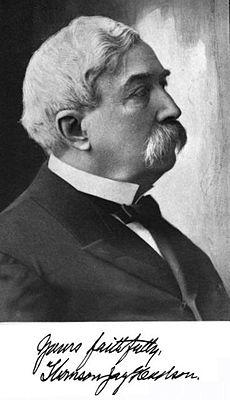Parapsychology
Parapsychology is the field of study concerned with anomalous phenomena related to Extra Sensory Perception (ESP), mind-matter interaction (psychokinesis) and survival of consciousness after bodily death. [1] Parapsychology is practiced by academically credentialed scientists, usually PhD graduates, who have been trained in scientific methodologies.
The field of parapsychology is supported by a number of professional organizations, such as the American Association for the Advancement of Science, the Parapsychological Association and the Society for Psychical Research. These organizations publish a peer-reviewed journal which provides a means for scientists in this field to share research results.
The phenomena of parapsychology are primarily studies from the perspective of human potential and non-physical or non-psychical explanations are not assumed. Care is taken not to exclude alternative explanations, so that concepts such as the existence of subtle, non-physical energy can be considered, along with possible psychic influence on that energy.
Concerned concepts include: ESP, PSi, Psi functioning, Intentionality, Mind-body duality and survived personality
History
Early psychical research
The Society for Psychical Research (SPR) was founded in London in 1882. The formation of the SPR was the first systematic effort to organize scientists and scholars for a critical and sustained investigation of paranormal phenomena. The early membership of the SPR included philosophers, scholars, scientists, educators and politicians, such as Henry Sidgwick, Arthur Balfour, William Crookes, Rufus Osgood Mason and Charles Richet.[2]
The SPR classified its subjects of study into several areas: telepathy, hypnotism, Reichenbach's phenomena, apparitions, haunts, and the physical aspects of Spiritualism such as table-tilting and the appearance of matter from unknown sources, otherwise known as materialization or an aport. One of the first collaborative efforts of the SPR was its Census of Hallucinations, which researched apparitional experiences and hallucinations in the sane. The census was the Society's first attempt at a statistical evaluation of paranormal phenomena, and the resulting publication in 1886, Phantasms of the Living is still widely referenced in parapsychological literature today. The SPR became the model for similar societies in other European countries and the United States during the late 19th century. Largely due to the support of psychologist William James, the American Society for Psychical Research (ASPR) opened its doors in Boston, Massachusetts in 1885, moving to New York City in 1905 under the leadership of James H. Hyslop. The SPR and ASPR continue research in parapsychology.[3]
Rhine era

In 1911, Stanford University became the first academic institution in the United States to study extrasensory perception (ESP) and psychokinesis (PK) in a laboratory setting. The effort was headed by psychologist John Edgar Coover, and was supported by funds donated by Thomas Welton Stanford, brother of the university's founder. In 1930, Duke University became the second major U.S. academic institution to engage in the critical study of ESP and psychokinesis in the laboratory. Under the guidance of psychologist William McDougall, and with the help of others in the department—including psychologists Karl Zener, Joseph B. Rhine, and Louisa E. Rhine—laboratory ESP experiments using volunteer subjects from the undergraduate student body began. As opposed to the approaches of psychical research, which generally sought qualitative evidence for paranormal phenomena, the experiments at Duke University proffered a quantitative, statistical approach using cards and dice. As a consequence of the ESP experiments at Duke, standard laboratory procedures for the testing of ESP developed and came to be adopted by interested researchers throughout the world.
The publication of J.B. Rhine's book, New Frontiers of the Mind (1937) brought the laboratory's findings to the general public. In his book, Rhine popularized the word "parapsychology," which psychologist Max Dessoir had coined over 40 years earlier, to describe the research conducted at Duke. Rhine also founded an autonomous Parapsychology Laboratory within Duke and started the Journal of Parapsychology, which he co-edited with McDougall.
Rhine, along with associate Karl Zener, had developed a statistical system of testing for ESP that involved subjects guessing what symbol, out of five possible symbols, would appear when going through a special deck of cards designed for this purpose. A percentage of correct guesses (or hits) significantly above 20% was perceived as higher than chance and indicative of psychic ability. Rhine stated in his first book, ExtraSensory Perception (1934), that after 90,000 trials, he felt ESP is "an actual and demonstrable occurrence."[4]

The parapsychology experiments at Duke evoked much criticism from academics and others who challenged the concepts and evidence of ESP. One such criticism was that subjects were cheating. Illusionist Milbourne Christopher wrote years later that he felt "there are at least a dozen ways a subject who wished to cheat under the conditions Rhine described could deceive the investigator".[5] According to Christopher, Rhine did take precautions against cheating in response to criticisms of his methods, but once he did, he was unable to find the same high scores reported in earlier trials.[5] Another criticism, made by chemist Irving Langmuir, among others, was one of selective reporting. Langmuir stated that Rhine did not report scores of subjects that he suspected were intentionally guessing wrong, and that this, he felt, biased the statistical results higher than they should have been.
Rhine and his colleagues addressed these criticisms through new experiments, articles, and books, and revisited the state of the criticism along with their responses in the book Extra-Sensory Perception After Sixty Years (1940).[6] In 1957, Rhine and Joseph Gaither Pratt wrote Parapsychology: Frontier Science of the Mind.
The administration of Duke grew less sympathetic to parapsychology, and after Rhine's retirement in 1965 parapsychological links with the university were broken. Rhine later established the Foundation for Research on the Nature of Man (FRNM) and the Institute for Parapsychology as a successor to the Duke laboratory. In 1995, the centenary of Rhine's birth, the FRNM was renamed the Rhine Research Center. Today, the Rhine Research Center is a parapsychology research unit, stating that it "aims to improve the human condition by creating a scientific understanding of those abilities and sensitivities that appear to transcend the ordinary limits of space and time."[7]
General
Society for Psychical Research
Founded in London in 1882 to "investigate that large body of debatable phenomena… without prejudice or prepossession of any kind, and in the same spirit of exact and unimpassioned inquiry which has enabled Science to solve so many problems." [8]
References
- ↑ FAQ: What is parapsychology?, Parapsychological Association, 2011, http://www.parapsych.org/articles/36/76/what_is_parapsychology.aspx.
- ↑ Beloff, John (1977). Handbook of parapsychology. Van Nostrand Reinhold. ISBN 0-442-29576-6.
- ↑ Wooffitt, Robin (2006). The Language of Mediums and Psychics: The Social Organization of Everyday Miracles. Ashgate. ISBN 0-7546-4202-X.
- ↑ J. B. Rhine (1934). Extra-Sensory Perception. (4th ed.) Branden Publishing Company 1997. ISBN 0-8283-1464-0
- ↑ 5.0 5.1 Christopher, Milbourne. (1970) ESP, Seers & Psychics. Thomas Y. Crowell Co.
- ↑ Rhine, J.B. (1966). Foreword. In Pratt, J.G., Rhine, J.B., Smith, B.M., Stuart, C.E., & Greenwood, J.A. (eds.). Extra-Sensory Perception After Sixty Years, 2nd ed. Boston, US: Humphries.
- ↑ The History of the Rhine Research Center. Rhine Research Center. Archived from the original on 2007-05-29. Retrieved on 2007-06-29.
- ↑ Cardeña, Etzel. A Call for an Open, Informed Study of all Aspects of Consciousness, Frontiers in Neuroscience, publisher city, 2014, http://www.frontiersin.org/Journal/10.3389/fnhum.2014.00017/full.